
Benjamin Chew was a fifth-generation American, a Quaker-born legal scholar, prominent and successful Philadelphia lawyer, slaveowner, and chief justice of the Supreme Court of the Province of Pennsylvania and later the Commonwealth of Pennsylvania. Chew was known for precision and brevity in his legal arguments and his excellent memory, judgment, and knowledge of statutory law. His primary allegiance was to the supremacy of law and the constitution.
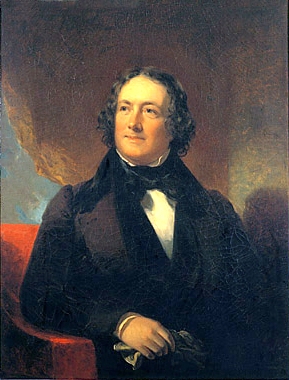
Nicholas Biddle was an American financier who served as the third and last president of the Second Bank of the United States. Throughout his life Biddle worked as an editor, diplomat, author, and politician who served in both houses of the Pennsylvania state legislature. He is best known as the chief opponent of Andrew Jackson in the Bank War.

Charles Willson Peale was an American painter, soldier, scientist, inventor, politician, and naturalist.
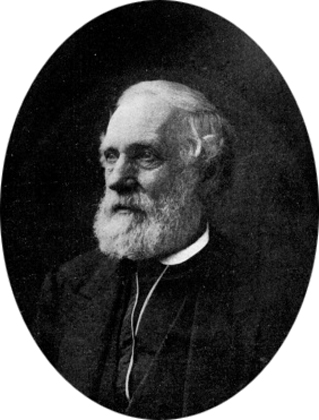
Titian Ramsay Peale was an American artist, naturalist, and explorer from Philadelphia, Pennsylvania. He was a scientific illustrator whose paintings and drawings of wildlife are known for their beauty and accuracy.

Christ Church Burial Ground in Philadelphia is an important early-American cemetery. It is the final resting place of Benjamin Franklin and his wife, Deborah. Four other signers of the Declaration of Independence are buried here, Benjamin Rush, Francis Hopkinson, Joseph Hewes, and George Ross. Two additional signers of the Declaration of Independence, James Wilson and Robert Morris, are buried at Christ Church just a few blocks away.

The Biddle family of Philadelphia, Pennsylvania is an Old Philadelphian family descended from English immigrants William Biddle (1630–1712) and Sarah Kempe (1634–1709), who arrived in the Province of New Jersey in 1681. Quakers, they had emigrated from England in part to escape religious persecution. Having acquired extensive rights to more than 43,000 acres (170 km2) of lands in West Jersey, they settled first at Burlington, a city which developed along the east side of the Delaware River.
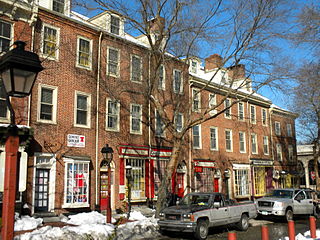
Society Hill is a historic neighborhood in Center City Philadelphia, Pennsylvania, United States, with a population of 6,215 as of the 2010 United States Census. Settled in the early 1680s, Society Hill is one of the oldest residential neighborhoods in Philadelphia. After urban decay developed between the late 19th and early 20th centuries, an urban renewal program began in the 1950s, restoring the area and its many historic buildings. Society Hill has since become one of the most expensive neighborhoods with the highest average income and second-highest real estate values in Philadelphia. Society Hill's historic colonial architecture, along with planning and restoration efforts, led the American Planning Association to designate it, in 2008, as one of the great American neighborhoods and a good example of sustainable urban living.

Gloria Dei Church, known locally as Old Swedes', is a historic church located in the Southwark neighborhood of Philadelphia, Pennsylvania, at 929 South Water Street, bounded by Christian Street on the north, South Christopher Columbus Boulevard on the east, and Washington Avenue on the south. It was built between 1698 and 1700, making it the oldest church in Pennsylvania and second oldest Swedish church in the United States after Holy Trinity Church in Wilmington, Delaware.

William White was the first and fourth Presiding Bishop of the Episcopal Church of the United States, the first bishop of the Diocese of Pennsylvania (1787–1836), and the second United States Senate Chaplain. He also served as the first and fourth President of the House of Deputies for the General Convention of the Episcopal Church.
Thomas Hickey was a Continental Army soldier in the American Revolutionary War, and the first person to be executed by the Continental Army for "mutiny, sedition, and treachery".

Charles Biddle was a Pennsylvania statesman and a member of the prominent Biddle family of Philadelphia.
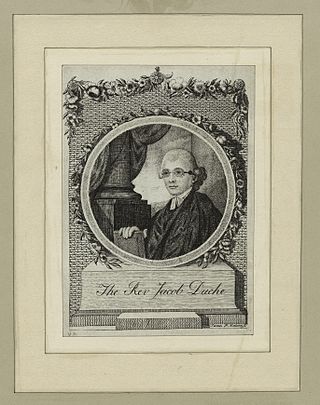
The Reverend Jacob Duché (1737–1798) was a Rector of Christ Church in Philadelphia, Pennsylvania, and the first chaplain to the Continental Congress.

Christ Church is an Episcopal church in the Old City neighborhood of Philadelphia. Founded in 1695 as a parish of the Church of England, it played an integral role in the founding of the Protestant Episcopal Church in the United States. In 1785, its rector, William White, became the first Presiding Bishop of the Episcopal Church.
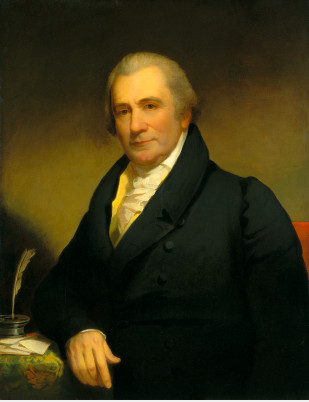
Robert Coleman was an American industrialist and politician who became Pennsylvania's first millionaire.
Colonel Jacob Duché (1708–1788) was a mayor of Philadelphia in the colonial province of Pennsylvania.

The Church of St. James the Less is a historic Episcopal church in Philadelphia, Pennsylvania, that was architecturally influential. As St. James-the-Less Episcopal Church, it was designated a National Historic Landmark for its Gothic Revival architecture, which influenced a generation of subsequent churches.
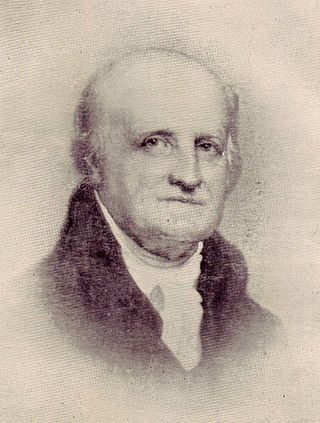
Richard Peters was a Pennsylvania lawyer, Continental Army soldier, Federalist politician, author and United States District Judge. Before his federal judicial service in the United States District Court for the District of Pennsylvania, Peters served as secretary of the Continental Board of War, delegate to the Congress of the Confederation and as member and speaker of the Pennsylvania House of Representatives and later the Pennsylvania State Senate. His son of the same name, Richard Peters became reporter of the decisions of the United States Supreme Court.



















